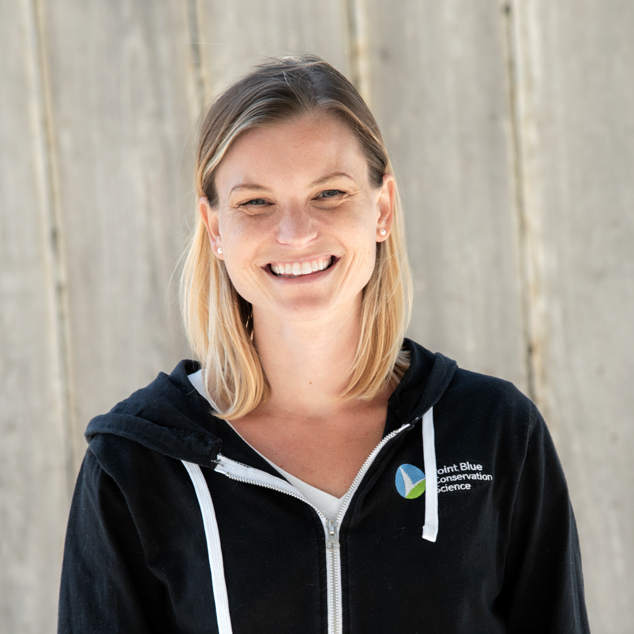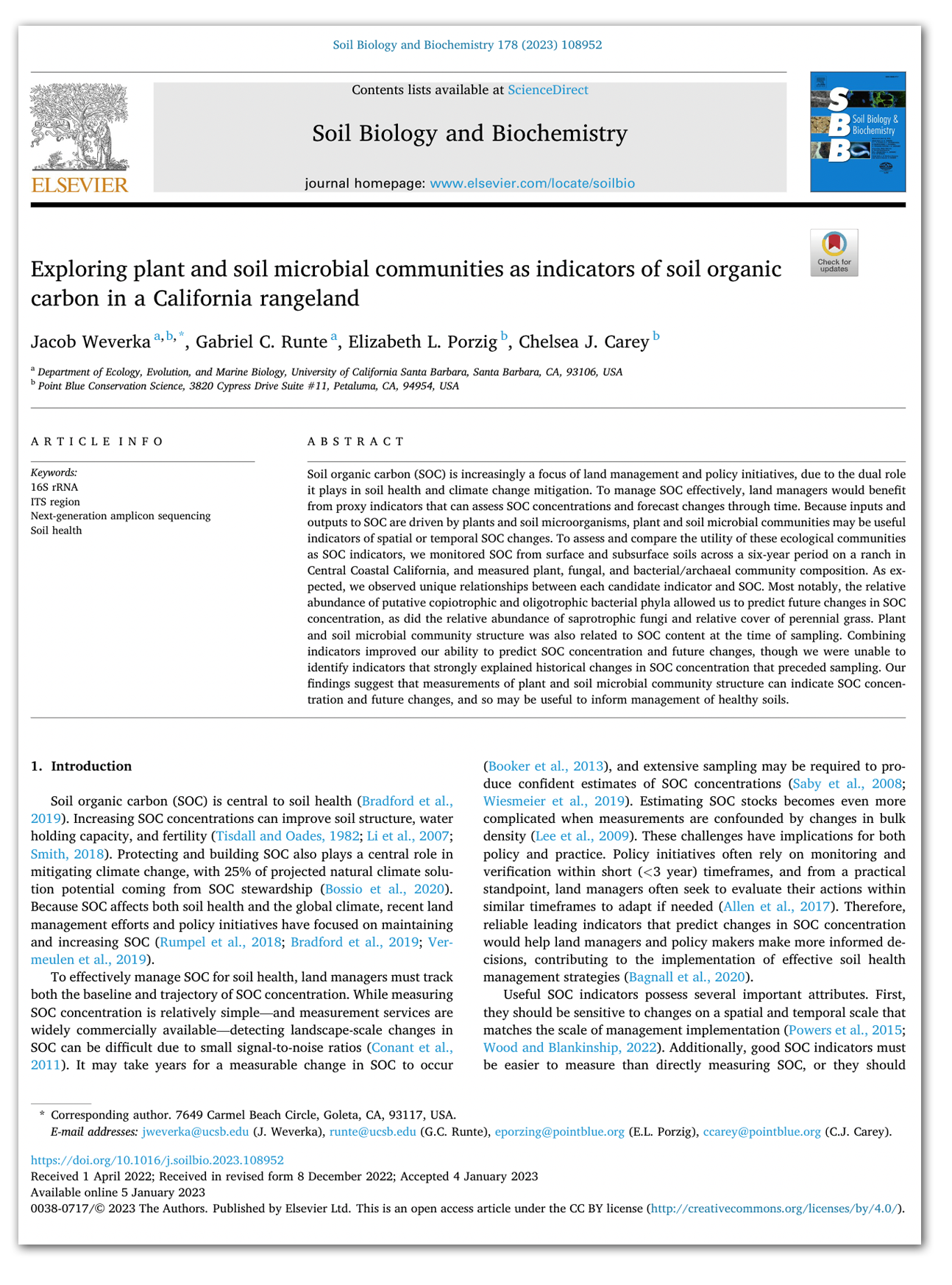Plant and soil microbial communities play an important role in carbon sequestration. Biological indicators related to these communities may offer alternatives to direct carbon measurements in some scenarios, potentially helping to forecast future changes.
New Point Blue Report: Plant and Microbial Indicators of Soil Carbon
04/26/2023
By: Chelsea Carey, Point Blue Conservation Science
 Plant and soil microbial communities play an important role in carbon sequestration. Biological indicators related to these communities may offer alternatives to direct carbon measurements in some scenarios, potentially helping to forecast future changes. Despite their significance, considerable work needs to be done to identify which biological indicators, if any, can accurately predict future trends in carbon across a landscape. To address this, Point Blue and TomKat Ranch teamed up with scientists from UC Santa Barbara to investigate the relationships between plant, fungal, and bacterial communities and soil carbon changes across space and time.
Plant and soil microbial communities play an important role in carbon sequestration. Biological indicators related to these communities may offer alternatives to direct carbon measurements in some scenarios, potentially helping to forecast future changes. Despite their significance, considerable work needs to be done to identify which biological indicators, if any, can accurately predict future trends in carbon across a landscape. To address this, Point Blue and TomKat Ranch teamed up with scientists from UC Santa Barbara to investigate the relationships between plant, fungal, and bacterial communities and soil carbon changes across space and time.
We found that certain combinations of plants, fungi, and bacteria served as reliable indicators of soil carbon storage. Specifically, we found bacteria that metabolize carbon more slowly and efficiently are associated with sites that store more carbon in the long run. Decomposing fungi were also associated with enhanced soil carbon sequestration over time. On the other hand, bacteria that thrive in high carbon environments and are thought to “leak” more CO2 as they work, were associated with sites that showed carbon losses over time.
While more research needs to be done, this work contributes to a growing body of knowledge around biological indicators related to soil carbon sequestration. Our findings offer valuable insights for further investigation, and our hope–as ever–is that they will help to build strategies that promote increased carbon storage in the soil, mitigate climate change, and build resilience into working landscapes for a more stable future.
Check out the full publication here.
